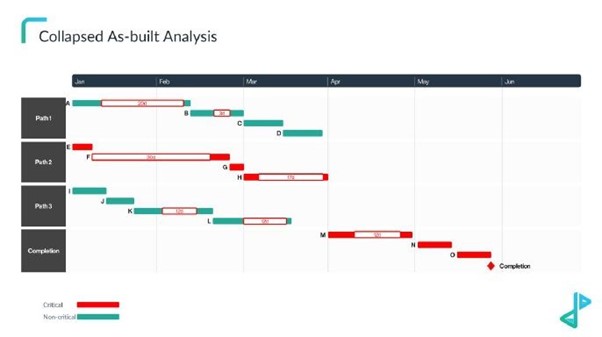The retrospective technique is known as the collapsed as-built delay analysis methodology is utilised to assess the impact of delays or changes on project completion dates. This approach begins with the as-built schedule and then subtracts activities representing delays or changes. It is typically employed when reliable as-built schedule information is available, but baseline schedule and contemporaneous schedule updates are either absent or flawed, rendering them unreliable for delay analysis purposes.
To implement the collapsed as-built delay analysis, project delays or changes are identified, and corresponding activities are subtracted from the as-built construction schedule. The resulting “collapsed as-built” schedule illustrates when the project would have been completed if not for these delays or changes, thereby highlighting their effect on the project’s completion date. The diagram below depicts a sample collapsed as-built schedule.
It’s important to note that selecting an appropriate analysis methodology involves considering various factors such as contract requirements, contextual situations, documentation levels, complexities, legal jurisdictions, and dispute resolution mechanisms. The choice of analysis method should rely on professional judgment, thorough factual research, and evaluation.

